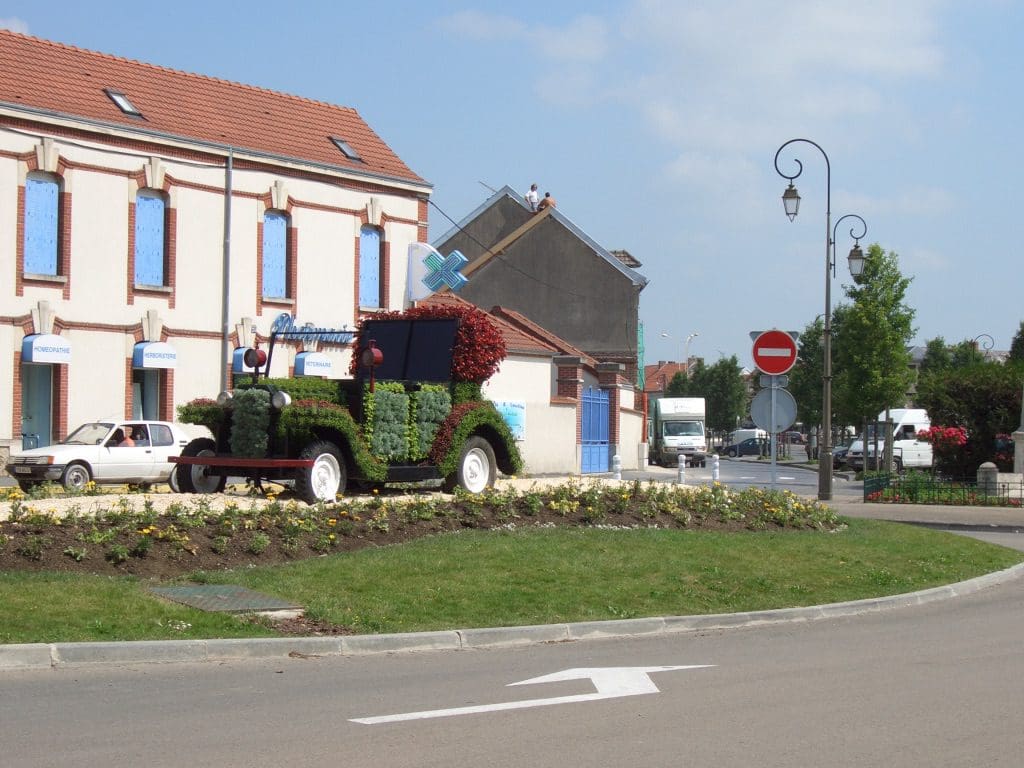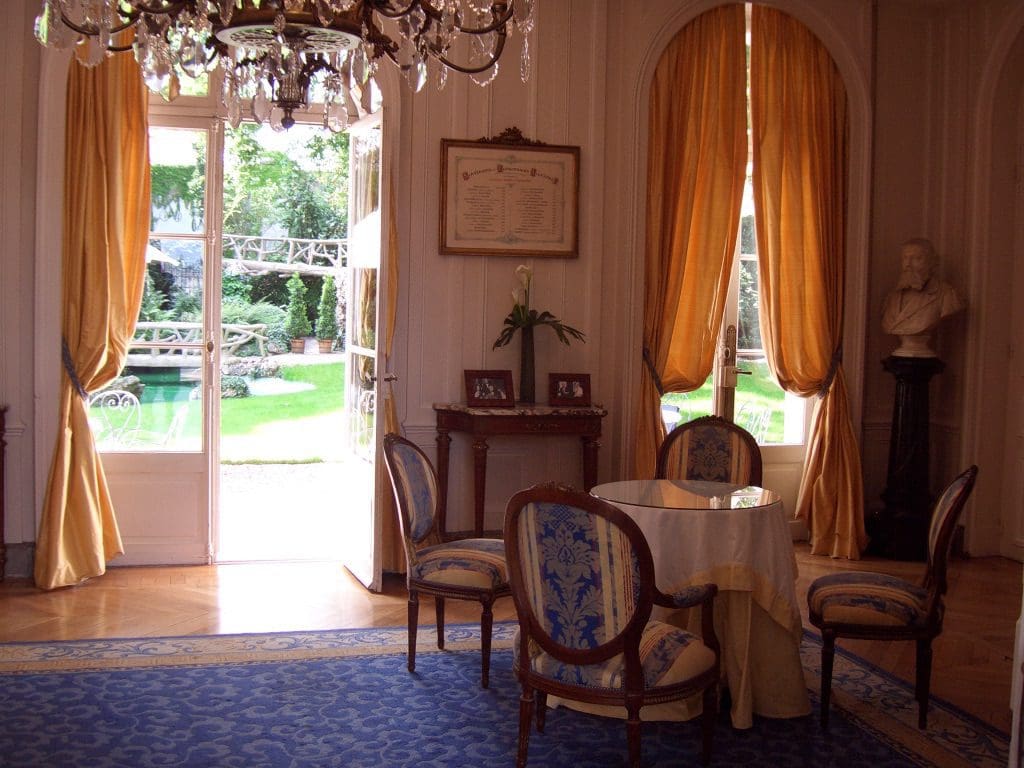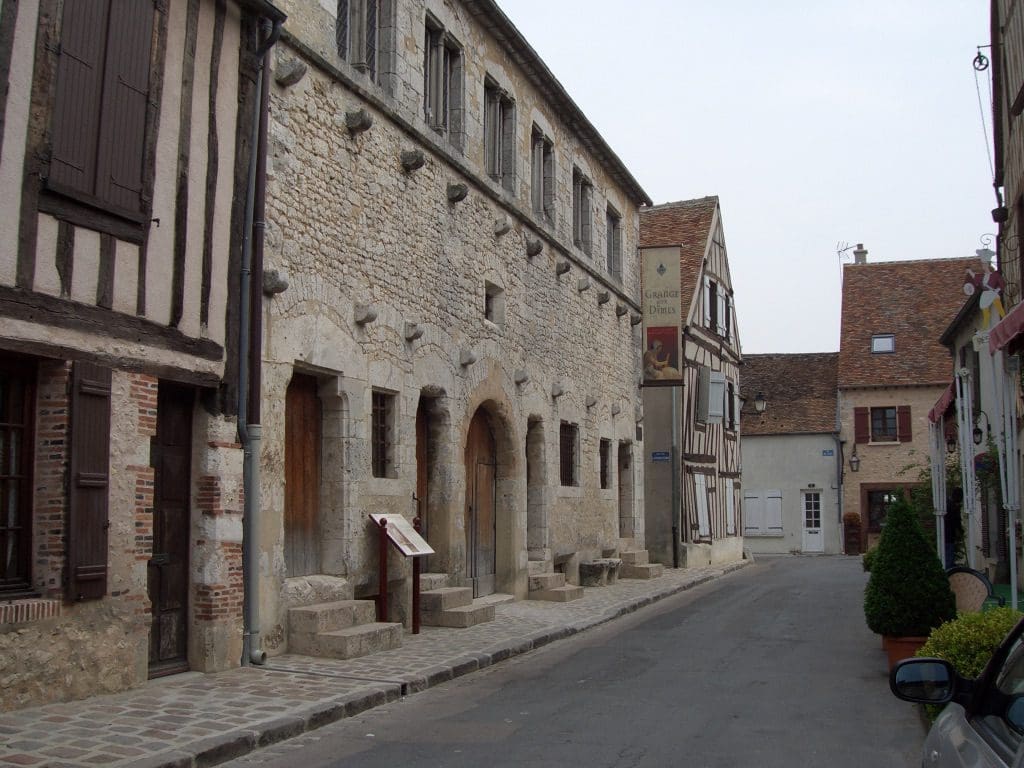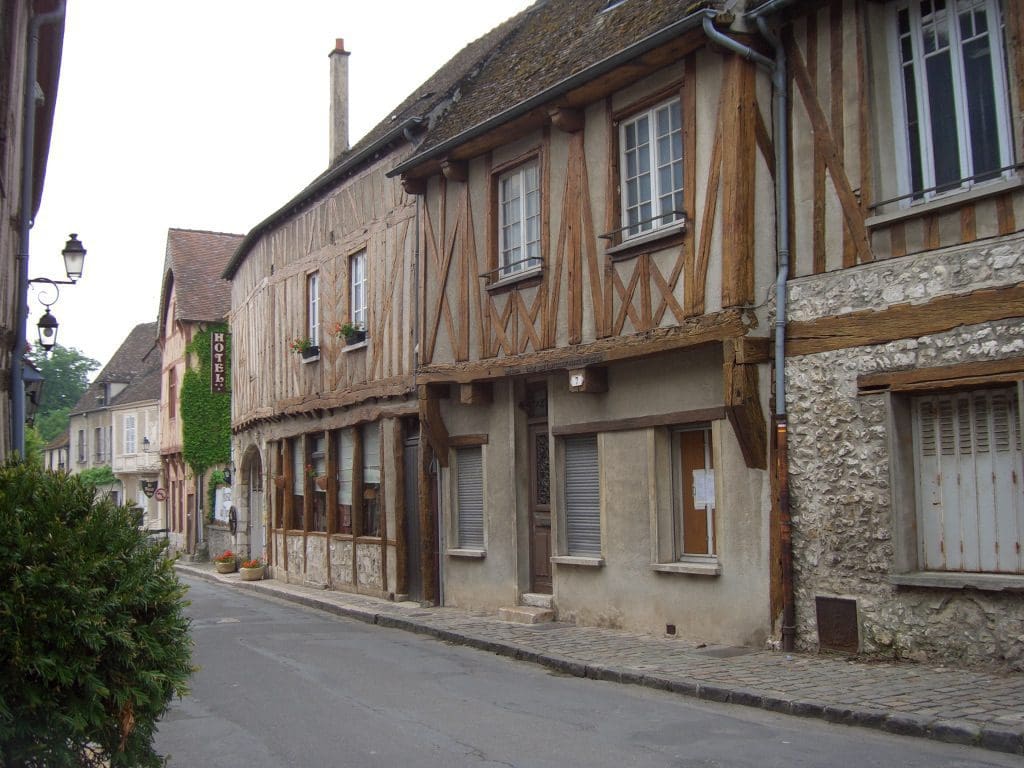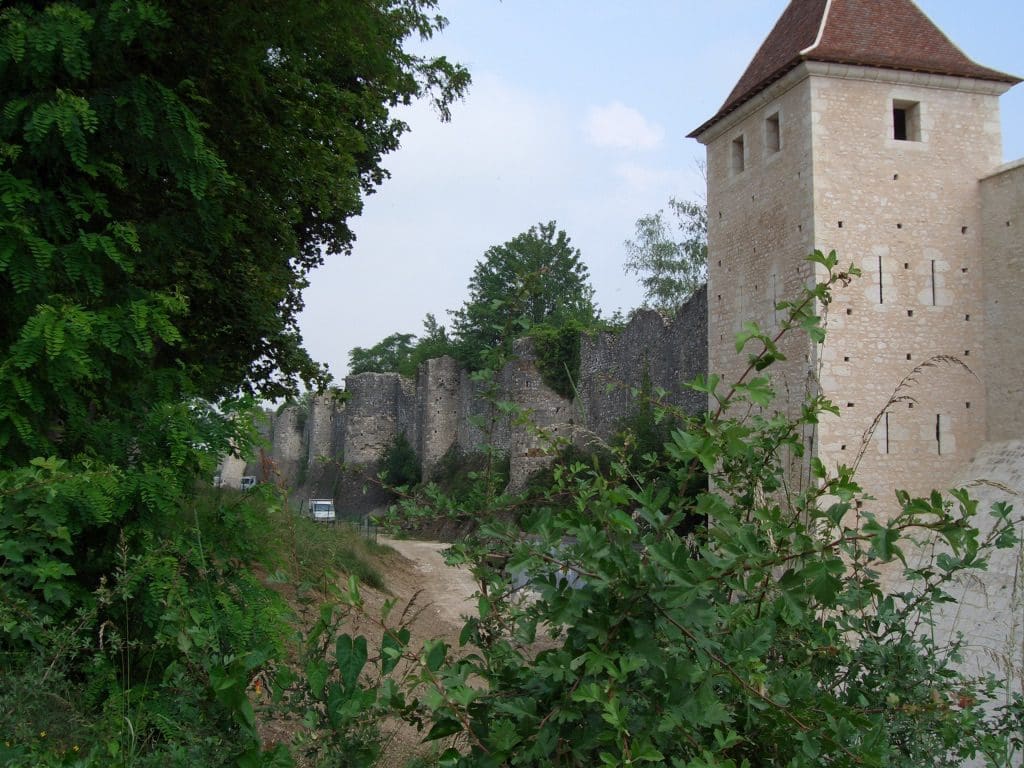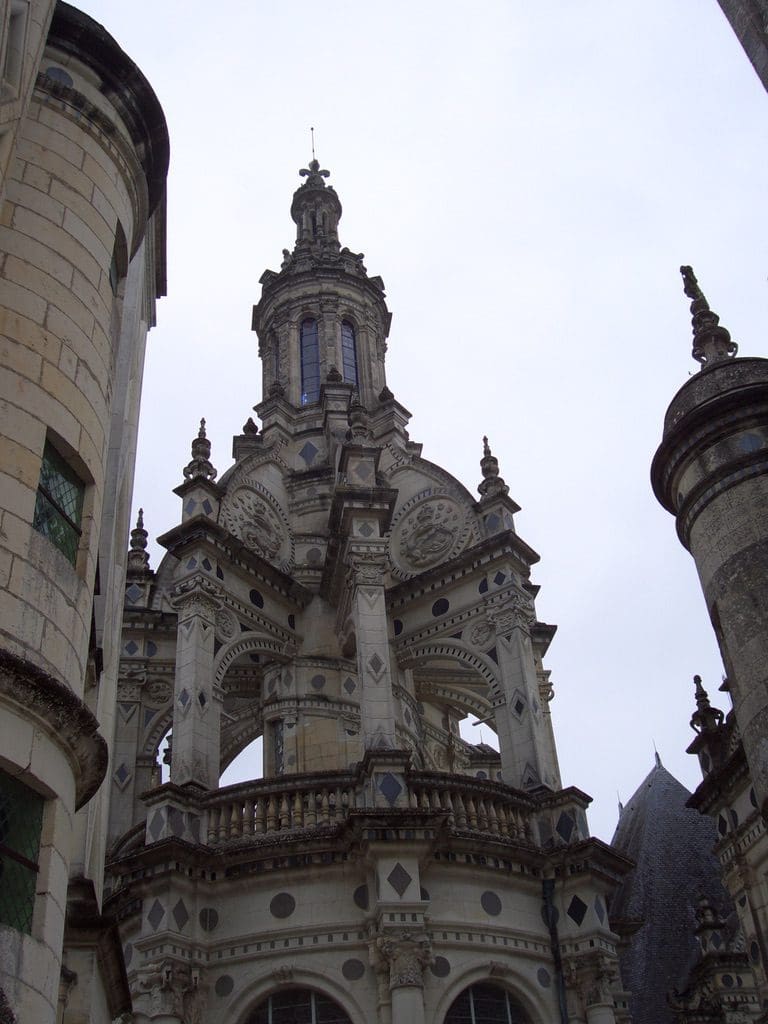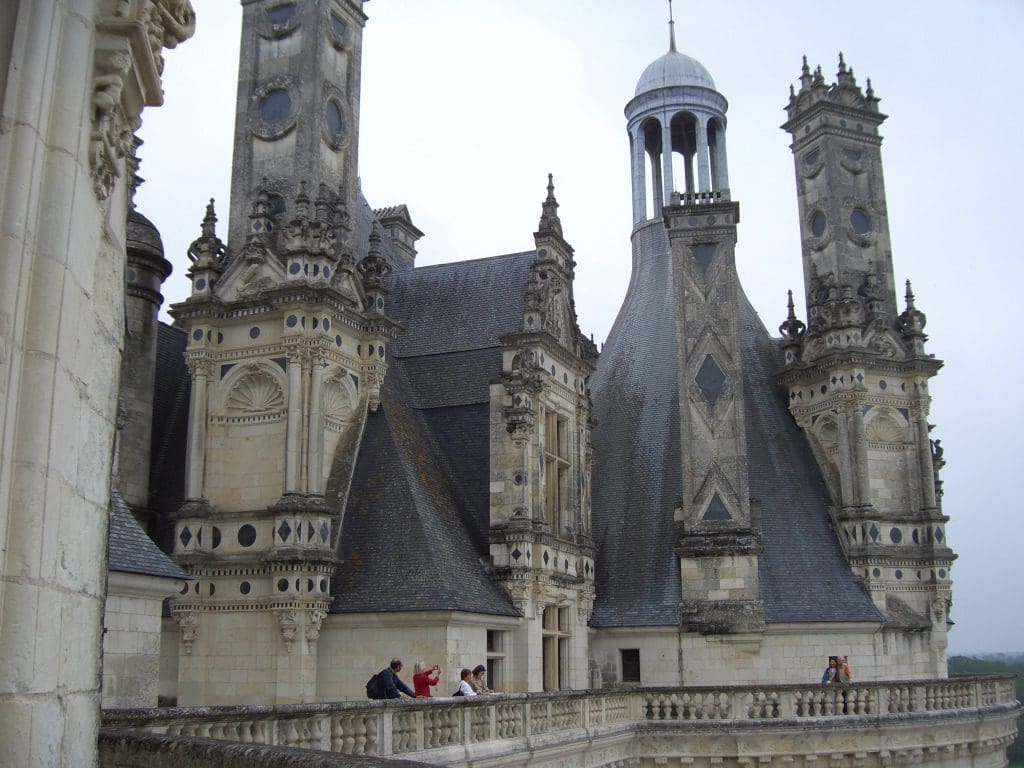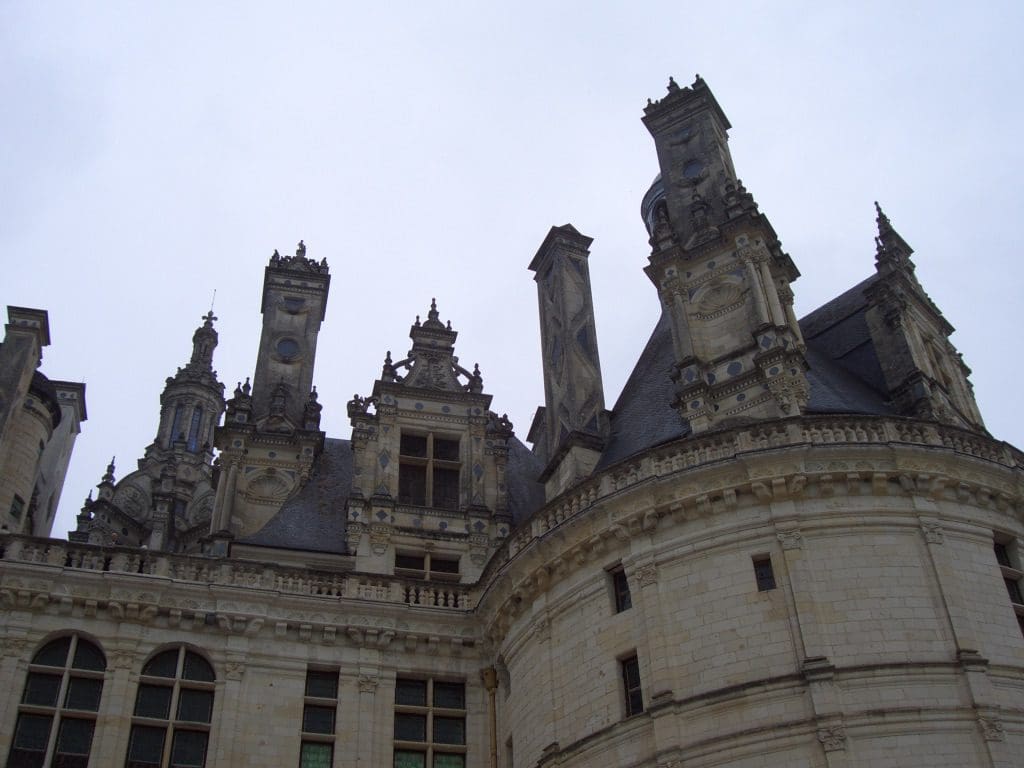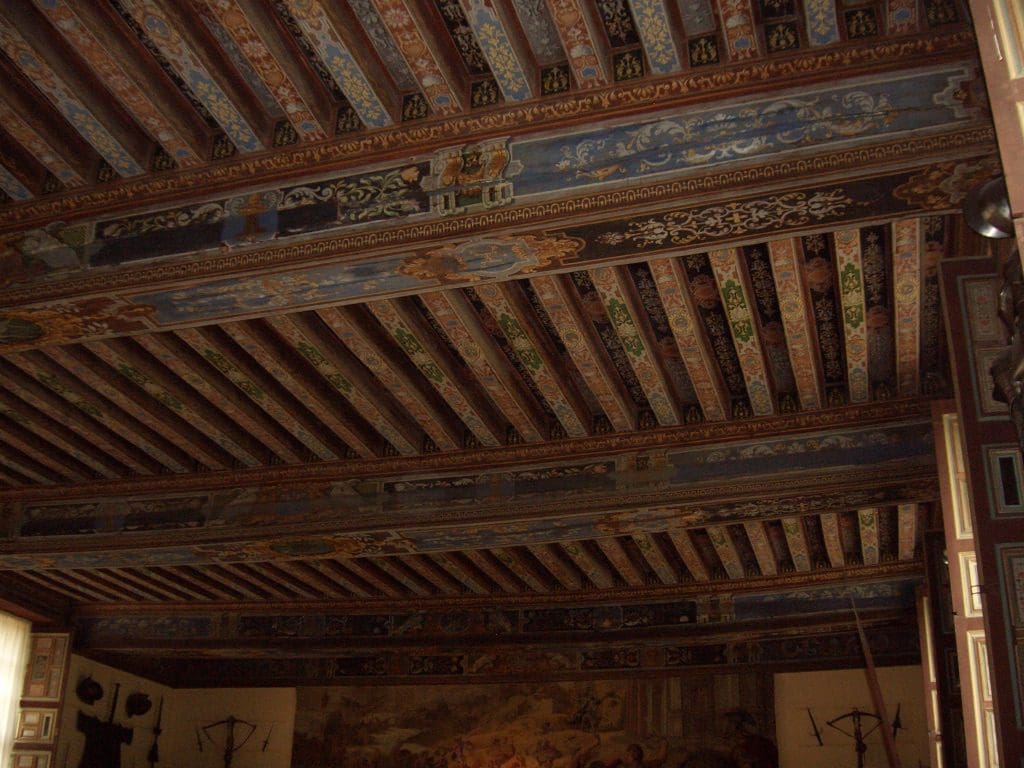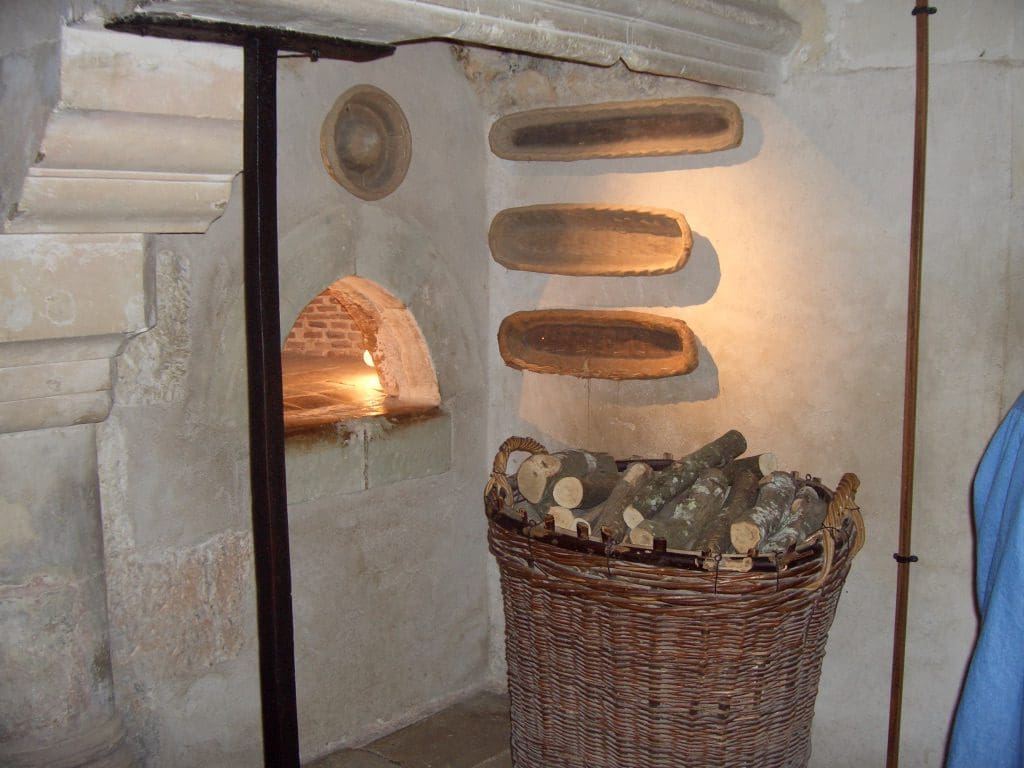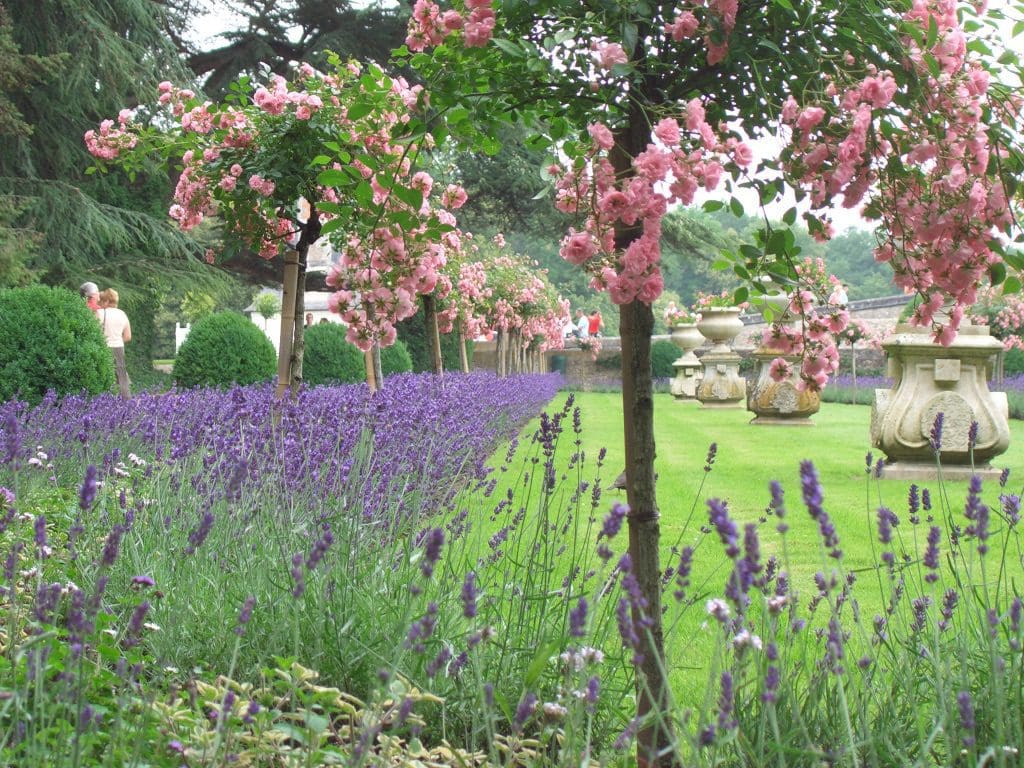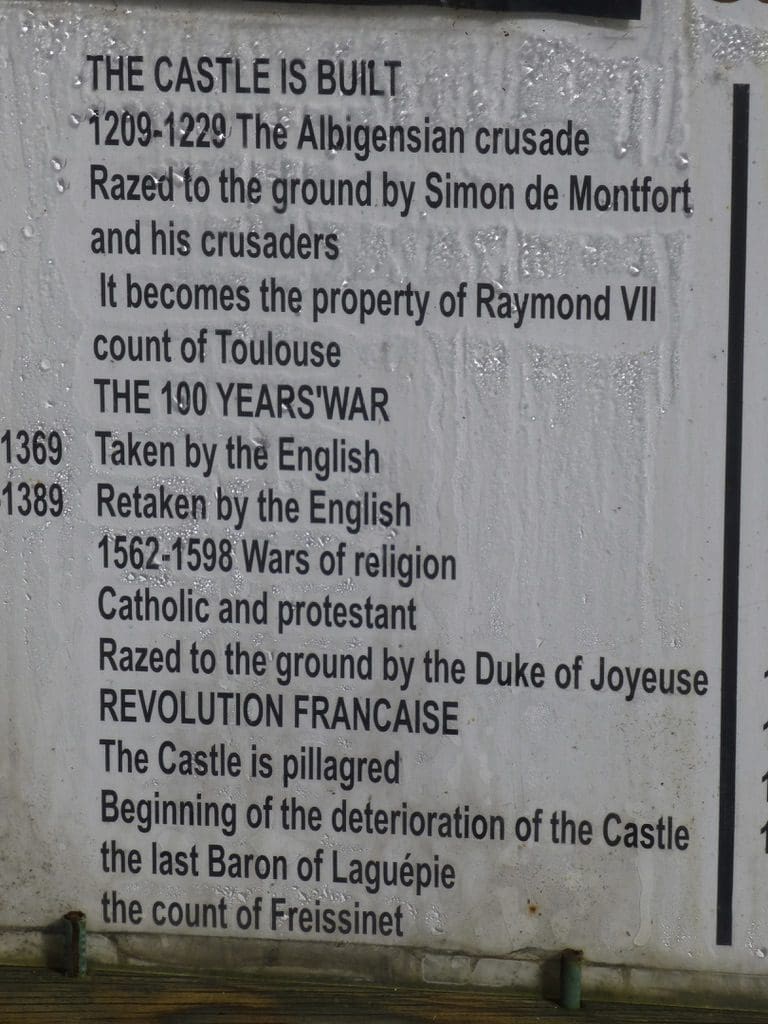Champagne, Loire
4/6 Bonjour. Ca va? Welcome to Champagne. We are set up in a quiet camp ground in the little village of Meix de Epoing just outside Sezanne which is in southern Champagne. The area is a rolling farm land dotted with villages. On the flat areas crops- wheat, barley, potatoes, peas, canola, corn are grown right to the edge of the road, whilst the west to south facing slopes are covered in vines. The hill tops are reserved for wood land. The canola is no longer in flower so the bright yellow patches no longer dot the landscape, however, the barley (I think) is turning golden brown ready for harvesting and now contrasts with the different green fields. The human activity is in the vines and today each vineyard had a van (usually white) parked in it. The workers were pruning the vines. About every 2-5 kilometres there is a village, each with several champagne caves (cellars). Many of the villages take extra care with their surroundings and have flower gardens and pot plants lining the narrow streets.
This morning we followed a champagne trail north along the back roads for a couple of hours. On one of the hill tops they have built an enormous monument to the battle of the Marne (WW 1). The French were rapidly being pushed south and at this point General Foch made his big rallying speech which is now in French folk lore. In the next couple of weeks the French reversed the tide and pushed the front line back north across the Marne to about Verdun where both sides dug in for the next couple of years. In the area we could see from the top of the hill approximately 180 000 French lost their lives. Just down the road there was a small monument with a couple of cannons commemorating a battle field in the Napoleonic war. These people are pretty good at rebuilding their lives, villages and farms. What are missing are the hundreds of thousands of headstones, and the bus-loads of screaming schoolkids that tromped around Flanders.
About midday, the vans in the fields started to drive back to the villages – definitely lunch time peak 10 minutes traffic. We decided to treat ourselves today and found a restaurant of some note in one of the larger villages. The set Champagnoise menu seemed appropriate so we settled in to a four course meal starting with, of course, a glass of champagne. Smoked duck with a green lentil salad. Guinea fowl with a tasty potato bake and a wonderful cabbage concoction. Cheese that was soft, creamy and alive and tasted wonderful. Followed by the most incredible chocolate cake and a wonderfully flavoured sorbet. Of course all this was washed down by half a bottle (we were driving) of very flavoursome red and finished of with a coffee. After a meal like that what else can you do but drive back to the tent, pull the mattress under a shady tree and wake up several hours later.
At about 6 p.m. the owner of the camp ground comes around to take your order for bread/croissants which will be delivered to the tent about 8.30 tomorrow morning. How civilised. It is 8 p.m. and the sun is still at least 20 degrees above the horizon and we are sitting outside in shorts and shirt. I could get used to a few days of this.
5/6 Off to the Moet Chandon tour at Epernay. This is an impressive place. (For Moet slide show click here) First bottles produced in about 1717. However, their records only go back to 1746 so they claim that as the start date. Of course Dom Perignom, produced at the same place, dates from about 1643. Friar Dom Perignom found the way of making the bottles strong enough and used corks from Spain. Napoleon was a big customer of Moet and visited 7 times and bought up big and introduced the drink to his influential mates – good PR. Moet, on a big year has produced 10-15 million bottles. They own almost 300 villages that work just for them: 17 produce extremely consistent extremely good quality grapes year after year, and are classified as ‘Grand Cue’; 43 are not so consistent and are classified as ‘Premier Cue’ (villages); the rest (227+) are not consistent enough and are just ‘Cue’. A very interesting classification system that goes towards giving their consistent quality. Their customers demand a consistent quality and Moet’s wine makers blend from the current year’s supply along with ‘reserve’ wine form previous years to get the constant taste for their ‘vin ordinaire’ (at 30 euro a bottle). If the year has exceptional flavours, they release a ‘vintage’ (300 euro a bottle). We took the ‘vintage’ tour (23 euro each) which entitled us to 2 glasses of vintage. Extremely smooth and ditto for the aftertaste. A brut (which was not extremely dry) and a pink. Excellent. The tour consisted of walking through a few of their 28 km of underground tunnels. Off the side of the tunnels are little rooms. One had 95,000 bottles. There are thousands of such rooms, all with different stages of production. Most have caps until they have the sediment removed – by quickly freezing it and taking off the bottle cap. The 6 atmosphere pressure inside ejects the sediment plug. (One American woman had great difficulty with the concept that the pressure in the bottle would eject the plug, and needed this explained several times. Education was a huge success there – not.)
From there to an excellent lunch at Chez Max which filled up with locals having lunch. Plat du jour – three courses – 14 euro. The cheese plate had small slices of 5 local cheeses every one of which was extraordinary. People entering the restaurant greet those already there and wish them ‘bon appetite’. Very different from the head down Australian way. Very inclusive.
From there, we drove through the main vineyard country for Champagne. It took us about 3 hours of driving through vineyards as far as we could see. They appeared to be in a band of vines about 5 kilometres wide and 30 kilometres long surrounding the hill between Reims and Epernay on north, east and south facing slopes. It was like driving through a huge well tended garden. Every plant looked after by hand. Divided into plots of about ½ hectare each of which was treated separately – with records for almost each plant kept meticulously. Little white vans dotting the hillsides each with a few people out pruning. Villages are spaced about every ½ to 2 km along the road – each looking after their plots – wall to wall grapevines. Each village has between 3 to 15 champagne makers – ie champagne labels. There are thousands of champagnes here. Most of this huge production is consumed in France.
The combined retained knowledge in the region about wine making is staggering. The quality control system of record keeping and classifying growers according to their ability to be ‘consistently good’, a system that has been used for hundreds of years, is remarkable.
Compare this with the Hunter. Hundreds of wine makers – maybe, and lots of vacant ground. Is there a strict system of quality control with records on each plant? Or does it all end up in the one vat? Are grapes picked by hand or by huge machines?
The land above this band of grape vines is wooded. (We went for a short walk to see some dwarf beech trees. Normal beech trees grow 20 metres. For some reason these dwarfs grow only 3 metres high and look like bonsais.) Below the grape vine band is back to grain crops that extend unbroken to the horizon. Very rich country under intense cultivation.
They have extended the same idea of reaching a level to their equivalent of ‘tidy towns’. Here, if you can get 1, 2, 3 or 4 stars depending on what level of tidy/floral the town has reached. It is also in line with the concept of the Michelin stars. No competition with winners and looses, and variable standards, just a level. With someone/town/restaurant/village who reaches each level having taking a known amount of effort to get there and known to have reached a preset standard. We like it.
Today, a pom came past in the camp ground and said, ‘Are you Austrians’. Bear in mind there are two Aussie flags on the back of the car and two on the tent. There are also two ‘AUS’ stickers on the back of the car. ‘No’, we replied, ‘Australians’. Aust-ral-ians!’, he said. ‘I could not work out why you had the union jack in the corner of your flag.’ Dumb shit. Why be in a commonwealth with these people who do not even know who the members are, or who flog them at cricket. Idiot pom. Kept us amused all day.
6/6 A day off. Helen did the washing and read. Geoff read and slept most of the afternoon. Tomorrow, we had planned to visit the nuclear power and waste disposal plant about 1 ½ hours drive to our east. Their web-site said by appointment and bring your passport. We rang today to be told that approval takes 3 days after they sight the passport.
Today we had bread, cheese and duck tureen for lunch. The wonderful Danish cheese from a few days ago has been thrown out. It does not stack up with the French cheeses. The camp ground has a system of delivering your pre-ordered croissants and bread each morning. A great idea, but not if you need an early start. The French shut everything (except restaurants) between 12:30pm to 2:30pm and each day needs to be planned accordingly. All supermarkets and museums and everything we are likely to want to use are all shut for those two hours each day. An occasional inconvenience to us, but probably a great life-lengthening life style. I can’t imagine John Howard with his punitive work-place changes condoning such ‘waste’.
We have military jet hurtling over us every now and again – going very fast and more often heard than seen. Does Australia still consider these European fighter aircraft when buying new planes? Is there a process for testing which aircraft is better (platform, capability, manoeuvrability, speed, fire-power, maintenance)? Or are we so wedded to the Americans that we take what ever they have?
Went for a walk through le Meix St Pot. Some very beautiful gardens. Many unfinished houses that looked as though the building project began a generation ago when all the materials were delivered. Grain crops growing right up to the house. People with a lot of spare time. Very reminiscent of Indonesia – just different crops, temperature & language.
We have liked the Champagne region very much. Friendly. The wine area very focused n wine and extremely prosperous. The rest (grain and field crops) busy by laid back.
7/6 We left our little campsite and headed off towards the Loire. On the recommendation of some friendly poms, we stoped along the way at Provins – a medieval fair town that is now a UN heritage site. (For Provins slide show click here) The town has been rebuilt with architecture of 11-13 centuries. It is packed with French tourists and school kids and has one of the biggest tourist car parks we have seen (outside of Ireland) – very popular. We visited two exhibits (there are a heap as well as four ‘shows’). One was a 13th century tower/castle (that survived because it was not defendable so was turned into a prison so no-one tried to knock it down). The other was a tithe barn with a brilliant exhibit of 11 still life recreations of scenes for a merchants fair from 13-15th century (Italian merchant, money changer, skin & leather merchant, public notary, draper, potter, quarry labourer, rock carver, parchment maker and spinner & weaver). The self-guided audio was the best yet. They used actors to tell a little story about each scene with lots of detail. Extremely good. The town also has excellent displays of Damascus roses – beautiful smelling roses that are supposed to be the predecessors of current roses. We had to push on and left about mid-day, just when big crowds were arriving for lunch and to see the afternoon shows – storming ramparts, falconry, etc. We probably should have stayed. Ah well.
Lunch at a road side restaurant along the way. Plat du jour. A very cosy restaurant with a great feel.
From there a hard drive through the rain along the toll road to Blois and our campground. This one is huge – 226 sites, swimming pool, restaurant, bars, supermarket. Normally 40 euro per night – our camping cheque will bring that own to 14 euro. But the rain today has brought out the sandflies. We will see. We think we like the smaller places better.
8/6 The Loire Valley. (For Loire slideshow click here.) Today we went to 2 chateau – Chambord and Cheverny. Chambord built by Francoise 1 in mid 1500 (he was a contemporary of Henry VIII, Holy Roman Emperor Charles and Suleiman the Magnificent – interesting times) is huge and extremely impressive. The double helix staircase some say based on designs by Leonardo da Vinci with the adjacent ceiling is almost enough. We wonder why he chose to build on a swamp and if his choice influenced others to build in the same location. As a representation of power (enormous structure, not defendable, not lived in) it must have impressed. It still does. Huge car park leaving about a kilometre walk to the chat itself.
Helen – The original tower structure was built with each of the floors following the internal cross of a church structure with the staircase in the centre. This bloke was so powerful and full of himself that instead of prayers going up to god, his double helix staircase (and him) could travel up and converse directly with the almighty. He apparently designed castles as a hobby in his younger days so decided to put his ideas into practice here. There was no mistaking that it was a Henry castle. His symbol was a chameleon which was carved everywhere along with the letter H – even down to a metal H surrounding many of the key holes for the doors. I have to admit that the proportions on the ground floor were staggering beautiful – based on the Golden ratio – and overall staggering powerful, with incredibly high ceilings. Having completed his original design he added lavish living quarters on either side. After all this, he only stayed in the place for about 70 days in his 30 year reign. Suppose he spent the odd long weekend hunting there. The whole thing is surrounded by huge and extensive forests as far as the eye can see in all directions. All the fitting and furniture were sold off after the revolution but they have fitted out the second floor living areas with relevant (and some original) furniture and tapestries etc. Some of the huge tapestries (made from wool, silk, gold and silver) were made in the middle of the 1600’s. The opulence and power in this building is too difficult to describe for me.
The second was Cheverny with beautiful grounds and interior. Still owned (and lived in up to 1985) by the family with some rooms on display. Afterwards, we commented that we saw nothing of how the servants moved material around (this was often a feature of tours in Irish stately homes). Cheverny was also an inspiration of the Tintin cartoons and there was a big display of Tintin cartoon material. Geoff had to see this. Only three other people in the museum with Geoff – another bloke (also with a big smile on his face) and 2 women with him (who looked bemused and rolled their eyes a lot). Definitely a bloke thing. We waited until 5 pm to see the Cheverny dog hunting pack fed. This was quite a procedure and a demonstration of training. At 4:15pm, the 100 or so dogs were moved into an adjacent pen and the food (chicken necks and parts and two huge bags of meaty bites) was laid out. The dogs mainly slept while waiting the next 45 minutes. At exactly 5pm, the dogs were let into the pen with the food and then made to wait a further minute or so until a signal was given and they all piled in. Dogs climbing over each other. The big bits went first then the meaty bites were shoveled up.
This was a much younger and smaller chat. The walls and ceilings were painted and decorated with the most intricate and wondrous designs. I‘m not big on Louis 14th chairs etc but this place sure had some incredible furniture. There was a whole large room given over to armoury – chain mail, jousting armour, “tin lids”, complete body amour, horse armour, swords, lances, muskets etc. etc. A staggering weight to have worn while balanced on a horse with someone taking a pot shot at you. No wonder if you fell off you stayed on the ground. You had to wait till someone helped you up again.
For us, food was a selection of cheeses for lunch and dinner. We are trying a few of the non-pasteurised and goats cheeses. Very tasty. There are so many of them and very difficult to choose. Geoff’s buying behaviour is to stand in front of the cheeses until someone else selects one and go with that. Same with wines where the choice is even more overwhelming.
9/6 A sunny day to visit Amboise. This is a very impressive site – seat of kings, royal house. Actually very plasant to sit and read the information brochure. Learn your history in the place it happened. Actually a very French view of the history – as one would expect. They certainly don’t like the English much and have a very ambivalent view of their own ex-royalty. It is good to see what the French think happened in 1500s. We have an idea of what the English think. They coincide in places.
As we were leaving the chateau (at lunch time) we spied a little wine tasting booth and had to have a couple. We bought 4 bottles including a cold white for lunch – demi-sec which turned out to be agreeably sweetish and very drinkable. The lady asked if we had an opener ‘oui’, but later we found no glasses. So we made two by cutting an empty coke bottle in half. (We were using it to carry water). So there we sat at picnic table in a beautiful woods eating brie and spiced pork on bread and drinking our excellent white out of a chopped up coke bottle. The cherry season is in full swing so we managed to polish off a huge bag full while waiting to get back to regulation driving alcohol limit.
From there we went back to Amboise to see the Leonardo da Vinci museum – he died in Amboise – having been invited and paid by the king to live here for the last three years of his life. The museum has models made from many of his drawings. He certainly had a fascination with gears and fulcrums. It appears that he was extremely adept at combining gears and other mechanical aids with current (at his time) inventions by others. He was also certainly a visionary. Some of his flying machines would not work but many other things we can see in use today. There was one model called ‘the first car’ which was a wheelbarrow like thing with big gears. It caused one American woman to burst out ‘that is not a car, he gets too much credit’. Oops, we know Henry Ford invented the car and other Americans invented everything else. Get back in your hole, Leonardo.
We had planned to visit another chateau in the afternoon but spent so much time wandering around Leonardo’s house.
10/6 We began at Chateau Chenonceaux. This is the most beautiful so far. The house of 5 queens (and numerous mistresses), it has a more delicate, festive aire. We paid the extra and took the audio guide which was well worth it. (Actually, it is an iPod so we could see on the little screen what they were talking about, so they did not have to say the 3rd painting on the left in the second row – very useful). This is a very enjoyable place. Built early 1500s and lived in every since. During 1500s by a string of queens and mistresses. Survived the revolution by being turned into a lumber yard and by the popularity of the then owner. In WW2 it was on the border between Vichy and free France. The Germans of course shelled it.
We had lunch there – an ordinary plat du jour.
From there we began the long journey south on toll way (21.60 euro for 2 ¾ hour driving, about 300 km) to the Central Massif where we intend to spend a few days. Along the motorway, there are huge servos every 50 or so km. These usually have several palaces to eat and a shop to buy groceries – often al in the one big building – along side the motorway. (Thus differing from the US and Canada where one would have to leave the freeway and enter a town or lay-by with several different buildings with different things.)
It began to rain as we were putting the tent up – bugger. We had bought the usual cheese and bread for tea but instead elected for a pizza. A very good choice. What can the French do with Pizza. Well, get rid of that tasteless Mozzarella for a start and put good cheese on it. An excellent meal. Appertif, pizza, bottle of excellent rose, dessert. A good choice. All in this little village. The place was packed. And quiet. No shouting to be heard. Several youngish kids sitting up to the table and not causing a riot. And here we found our first 10 year olds having a very watered glass of wine. Civilized these French.
For the first time in 10 days, we found an Internet Café. So, 2 reports sent on the same day.


